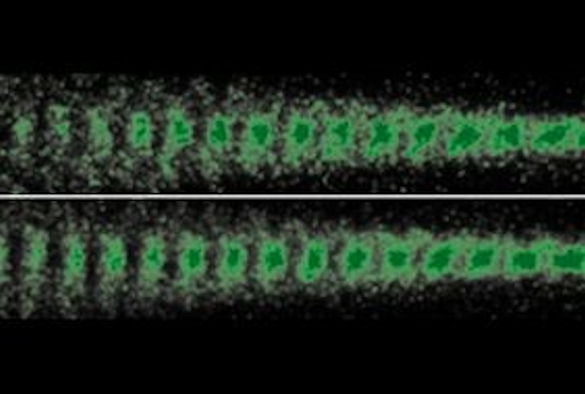Controlling the plasma waves in AWAKE

Scientists from the AWAKE collaboration have found a new way to control the waves that propel the electrons in a plasma accelerator. This is a crucial step in realizing AWAKE as the accelerator technology of the future. The results have been reported in the journal Physical Review Letters.
The AWAKE experiment accelerates the electrons injected in the wake of a proton beam travelling through a plasma cell, in a process dubbed plasma wakefield acceleration.
The experiment which is being carried out at CERN by an international team of scientists, including researchers from the University of Liverpool, utilizes a high-energy proton beam coming from one of the pre-accelerators of the LHC.
The long, narrow, proton beam is subject to the self-modulation instability in the plasma, whereby it splits itself into millimeter-long bunches in the plasma. Only when the initial proton beam splits into smaller sections can the emerging plasma waves be used for acceleration. However, the plasma waves must also be properly synchronised with the electrons injected, therefore the time and position at which the wave is generated must be actively controlled.
Patric Muggli, who heads the AWAKE group at the Max Planck Institute for Physics (MPP), explains why: "The goal of AWAKE is to accelerate electrons to high energies. The electrons should therefore take as much energy as possible from the plasma field. To do this, they have to jump onto the wave at the right moment – just like a surfer catching a wave."
AWAKE researchers were already able to define the beginning of the proton self-modulation to within a few picoseconds. Now they have succeeded to control the start of the self-modulation by sending a small packet of electrons into the plasma prior to the proton beam. The long proton beam can thus be broken down into short bunches at a specific time and in a controlled way.
The research team also succeeded in controlling other properties of the plasma field that affect the quality of the self-modulation, like the speed at which the first wave builds up, and its amplitude. The key parameter is the charge of the beams: The charge of the electron beam determines the amplitude of the primary wave, whereas the charge of the proton beam defines how fast it grows.
Professor Carsten P Welsch who leads the Liverpool work said: “The precise control of the physical processes that determine the development of the wake fields is an essential prerequisite for AWAKE to one day be used for particle physics experiments and other applications. Congratulations to the whole team for achieving this important milestone.”
The paper was highlighted as an Editor’s choice and you can find more information in the full article:
Controlled Growth of the Self-Modulation of a Relativistic Proton Bunch in Plasma
L. Verra et al. Phys. Rev. Lett. 129, 024802 (2022)